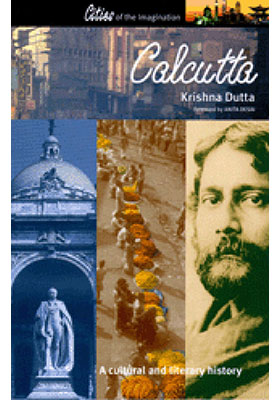Calcutta
A Cultural and Literary History
(加爾各答:文化和文學史)
ISBN : 978-190-2669-59-5
Cities of the Imagination Other Distributed Titles
March 2003
274 pages, 5.25″ x 8″
For sale in Hong Kong SAR and Macao SAR only
- HK$175.00
In the popular imagination, Calcutta is a packed and pestilential sprawl, made notorious by the Black Hole and the works of Mother Teresa. Kipling called it a City of Dreadful Night, and a century later V.S. Naipaul, Günter Grass and Louis Malle revived its hellish image.
This is the place where the West first truly encountered the East. Founded in the 1690s by East India Company merchants beside the Hugli River, Calcutta grew into both India’s capital during the Raj and the second city of the British Empire. Named the City of Palaces for its grand neo-classical mansions, Calcutta was the city of Clive, Hastings, Macaulay and Curzon. It was also home to extraordinary Bengalis such as Rabindranath Tagore, the first Asian Nobel laureate, and Satyajit Ray, among the geniuses of world cinema.
Above all, Calcutta (renamed Kolkata in 2001) is a city of extremes, where exquisite refinement rubs shoulders with coarse commercialism and savage political violence. Krishna Dutta explores these multiple paradoxes, giving personal insight into Calcutta’s unique history and modern identity as reflected in its architecture, literature, cinema and music.
CITY OF ARTISTS: Modern India’s cultural capital; home city of Tagore, Ray and Jamini Roy; College Street and the annual book fair; a city of learning and books.
CITY OF DURGA AND KALI: Kumortuli’s holy images and the flamboyant annual Durga Puja; Kalighat Temple and Kali, Calcutta’s divine and terrible protectress.
CITY OF PALACES: Grand colonial monuments and crumbling mansions of the Bengali babus; a mix of Palladian, Baroque, Rococo, Gothic, Hindu and Islamic architecture.
“Her history of Calcutta . . . . Blends history and analysis with incident (and) personal experience.” —The Hindu
“This is an admirable and in-depth guide to a city rich in traditions and contradictions; as vibrant and quirky as the place it celebrates, the book is a first-rate primer for those who wish to explore both Calcutta’s history and its modern identity.” —New Internationalist

